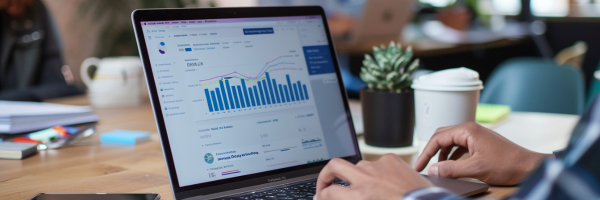
Nonprofits often face significant challenges in protecting sensitive donor information from cybercriminals. Many operate with limited budgets, making it harder to invest in advanced cybersecurity tools. Donor data, including names, addresses, and financial details, can be vulnerable without proper protection. Working with an expert cybersecurity team and implementing solid data management practices can help reduce these risks.
Here are some tips nonprofit organizations can follow to improve data security.
Use Secure Data Storage
Avoid storing donor data on unencrypted servers or local devices, as these are prime targets for cybercriminals. A better option is to use cloud-based platforms that offer encryption for both data in transit and at rest. Encryption scrambles the information, making it unreadable to unauthorized users.
You should choose a provider with a solid track record in data security. Look for services that comply with industry standards, such as PCI DSS (Payment Card Industry Data Security Standard) for processing payments or GDPR (General Data Protection Regulation) for protecting personal information.
Limit Access to Sensitive Data
Not everyone needs access to donor information. Limiting access based on roles can significantly reduce the risk of a data breach. You can use a role-based access control system that restricts data access to only those who need it for their work.
It's also a good idea to regularly review and update access privileges to make sure that only authorized people have the ability to view donor data. Doing this step minimizes the chances of internal data breaches and helps maintain tighter control over sensitive information.
Implement Two-Factor Authentication (2FA)
Requiring more than just a password to view donor data adds an extra layer of security. Two-factor authentication (2FA) combines something users know (like a password) with something they have (like a text message or authentication app code).
Even if someone's password is compromised, 2FA makes it more challenging for cybercriminals. Requiring each employee to use this security feature is a great way to protect accounts and keep sensitive information out of the hands of cybercriminals.
Train Staff on Cybersecurity Best Practices
Human error often plays a role in breaches. Training staff on best practices is key for protecting donor data. Staff members should be aware of phishing scams, which are common in nonprofit sectors, and know how to identify suspicious emails.
Regular training sessions on password security, data handling protocols, and reporting procedures for suspicious activity will help create a security-conscious culture within your organization. The more informed your team is, the better equipped they will be to prevent data leaks.
Work with a Cybersecurity Expert
Partnering with a cybersecurity expert can boost your nonprofit's defense strategies. Cybersecurity professionals can help identify threats, implement best practices, and monitor systems for suspicious activity. These cyber experts can provide the knowledge and technology needed to stay ahead of cyber threats for nonprofits.
Working with a cybersecurity team also builds trust with your donors. If supporters know that an organization is actively working to protect their information, they are more likely to feel secure and confident in their contributions. In other words, it's a win-win situation for your organization.
Regularly Update Software and Systems
Outdated software is a common weakness for cyberattacks. Hackers exploit vulnerabilities in old systems, making it crucial to keep all software up to date. Make sure that operating systems, antivirus programs, and donor management software are regularly updated with the latest security patches.
Automated updates can help minimize the risk of missing critical security fixes. Nonprofits should also perform regular system scans to check for any vulnerabilities. Doing this extra step is important in keeping your defenses current because cyber threats are always changing.
Perform a Thorough Data Audit
An audit identifies where data is most vulnerable and helps highlight any gaps in current security measures. Start by mapping out all points where donor data is collected--such as websites, donation forms, and emails and assess how securely this information is being handled.
An audit will help determine where stronger protection measures are needed while giving your organization a clear picture of potential weaknesses. It's always important to conduct these audits regularly to keep up with changes in technology and potential new threats.
Final Thoughts
Nonprofit organizations are often a top target for cybercriminals. Following these different practices can help keep your confidential data secure. Working with an expert cybersecurity team is also one of the most effective ways to remain proactive against these threats.

